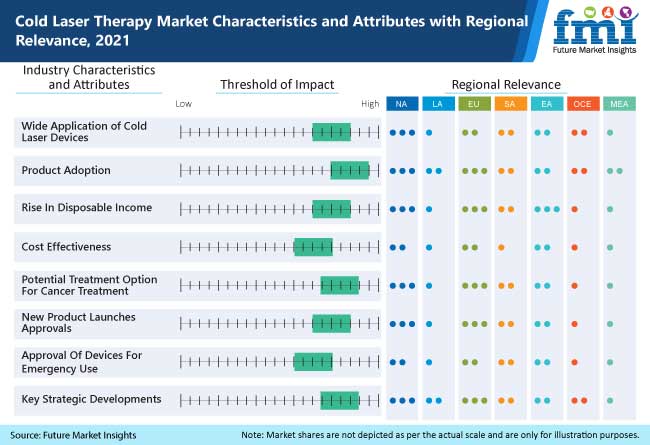In terms of revenue during the forecast years, the global foaming creamer market is projected to expand at a CAGR of around 3.6%.
While the coffee market has seen substantial growth in the recent past, coffee additives such as foaming creamers have also been witnessing significant consumption. According to a new intelligence outlook presented by Future Market Insights, the global demand for foaming creamers is anticipated to experience moderate growth over coming years – prominently driven by the expanding coffee market. Especially in Europe and the US.
To Get Sample Copy of Report visit @ https://www.futuremarketinsights.com/reports/sample/rep-gb-8446
Gourmet Coffee Remains a Primary Push Factor
Around 59% people based in the US prefer to consume gourmet coffee, daily, as indicated by the US National Coffee Association. Similarly, the liking for gourmet coffee is increasing in other regions as well – subsequently elevating the incorporation of foaming creamer in coffee mixes.
As gourmet coffee prominently trends the millennial population, visibly rising millennial preference for café-style foamed coffee is providing a push to foaming creamer demand. Moreover, growing product innovation in the instant beverages/drinks category, coupled with widespread availability of instant or ready-to-drink (RTD) beverage mixes is likely to pave the way for parallel growth in foaming creamer sales.
Non-dairy Foaming Creamer to Emerge Lucrative, Riding on the Price Benefit
In the backdrop of volatile milk prices post 2016, dairy products manufacturers have been facing the challenges posed by reduced pricing. On the flipside, manufacturers of non-dairy based products continue to capitalize on the relatively stable pricing scenario owing to the stability of the raw material prices. With an expanding consumer population turning to non-dairy, vegan products, it is more likely that non-dairy foaming creamer would discover an improved scope of sales in coming years.
Increasing awareness about the potential health benefits of a vegan lifestyle and the availability of a wide range of dairy alternatives/non-dairy products suitable for the same, will reportedly assist the demand for non-dairy foaming creamer over its dairy-based counterpart. A number of manufacturers of dairy-free foaming creamers are thus likely to strategize on the raw material experimentation.
While both dairy and non-dairy foaming creamers are extensively consumed in commercial applications for preparation of instant beverage mixes, such as coffee-based mixes, milk tea mixes, and cocoa-based mixes, the report also points to surging usage of foaming creamers in dietary supplements such as protein shake powders.
Global Foaming Creamer Market: Segmentation
Analysis by Base
- Dairy
- Non-Dairy
Analysis by End Use
- Beverage Mixes
- Coffee-based Mixes
- Milk Tea Mixes
- Cocoa-based Mixes
- HoReCa/Foodservice
- Dietary Supplements
Analysis by Function
- Instant
- Cold Water Soluble
Analysis by Region
- North America
- Latin America
- Europe
- Asia Pacific
- ASEAN (Association of South East Asian Nations)
- China
- Middle East & Africa
HoReCa & Food Processing Sectors Contribute Significantly to Market Growth
Steadily increasing cold water-soluble foaming creamer consumption by the foodservice sector is identified to be another strong factor contributing to the growth of foaming creamer marker. The analyst explains, “A majority of operators in food processing and foodservice sectors are adopting foaming creamers in sizeable volumes in an effort to eliminate the need for additional manual labor, or foaming equipment, or machinery – saving on the overall production costs. Foodservice or HoReCa sector and food processing entities are thus playing a vital role in supporting the revenue growth of foaming creamer landscape”.
As revealed by the competition tracking, major manufacturers of foaming creamers are projected to invest strategic efforts in penetration into the Southeast Asian region that traditionally has been a tea consuming territory and is gradually developing a preference for foamed coffee. Middle Eastern and Asian countries are also positioned as attractive investment pockets for foaming creamer manufacturers, according to the report.
Ask More About This Report @ https://www.futuremarketinsights.com/ask-question/rep-gb-8446
Significant Contributions of the Report
- Key Trends and Challenges: Detailed analysis on the ‘ins and outs’ of the market with qualitative research and quantitative insights
- Recent Drivers and Opportunities: Detailed assessment on the key growth drivers, technological developments, and factors affecting the market over the forecast period.
- Segmental Analysis: Extensive research on each segment and sub-segment, compiled by expert research analysts of FMI
- Regional Market Forecast: Thorough analysis of each regional market to provide market players with real-time data and reliable statistic to gain a competitive edge in the industry
- Competitive Landscape: Comprehensive analysis on prominent players and new entrants eyeing to improve their revenue prospects in the industry
About FMI:
Future Market Insights (FMI) is a leading provider of market intelligence and consulting services, serving clients in over 150 countries. FMI is headquartered in Dubai, the global financial capital, and has delivery centers in the U.S. and India. FMI’s latest market research reports and industry analysis help businesses navigate challenges and make critical decisions with confidence and clarity amidst breakneck competition. Our customized and syndicated market research reports deliver actionable insights that drive sustainable growth. A team of expert-led analysts at FMI continuously tracks emerging trends and events in a broad range of industries to ensure that our clients prepare for the evolving needs of their consumers.
Contact Us:
Future Market Insights
Unit No: AU-01-H Gold Tower (AU), Plot No: JLT-PH1-I3A,
Jumeirah Lakes Towers, Dubai,
United Arab Emirates
For Sales Enquiries: sales@futuremarketinsights.com
For Media Enquiries: press@futuremarketinsights.com
Website: https://www.futuremarketinsights.com
